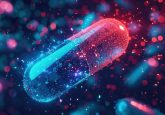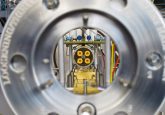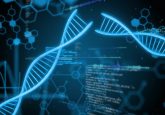Light microscopy technique could enable visualization of complex protein metabolism in living systems

A longstanding goal of the scientific community is closer than ever to being realized, thanks in part to research conducted at Columbia University (NY, USA). Visualization of complex protein metabolism in living systems, with high resolution and minimal disturbance, was the challenge tackled by the research team. They developed a light microscopy method that can produce an image of where new proteins are produced and old proteins are degraded inside living tissues and animals, details of which were recently published in ACS Chemical Biology.
Proteins are essential for the majority of biological functions in living systems. Many of these functions, including complex physiological and disease processes, involve protein synthesis and degradation in space and time. Long-term memory, for example, requires activity-dependent protein synthesis in specific neurons, while Huntington’s disease can disrupt the protein degradation pathways of affected cells.
The noninvasive and global (i.e., proteome) visualization of protein metabolism is a technically challenging goal, particularly for living systems. Previously, imaging mass spectrometry has been used, or methods using radioactive amino acids. However, these are not compatible with living systems. Fluorescence-based techniques, using unnatural amino acids, usually require cells to be fixed.
In order to address this problem, Wei Min, Assistant Professor of Chemistry at Columbia University, and his team used a novel combination of chemical labeling and physical detection. They employed an emerging laser-based technique termed stimulated Raman scattering (SRS) microscopy, combined with metabolic labeling of deuterated amino acids (D-AAs) by the cell’s native protein synthesis machineries. Newly synthesized proteins built upon the incorporated D-AAs were detectable by SRS through the unique vibration signature from carbon-deuterium bonds.
Using this method, Min and his team have been able to demonstrate imaging of newly synthesized protein in living cells. Lead author of the paper Lu Wei, a PhD candidate at Columbia University, explained: “The major advantage of our technique lies in its nontoxicity and minimal invasiveness, as administration of D-AAs in the model organisms appears to be nontoxic even for a long duration.”
“In addition to basic research, our technique could also contribute greatly to translational applications. Considering that stable isotope labeling and SRS imaging are both compatible with live humans, we envision a bright prospect of applying this platform to performing diagnostic and therapeutic imaging in humans,” Min elaborated.
Source: New microscopy technique allows mapping protein synthesis in living tissues and animals.






